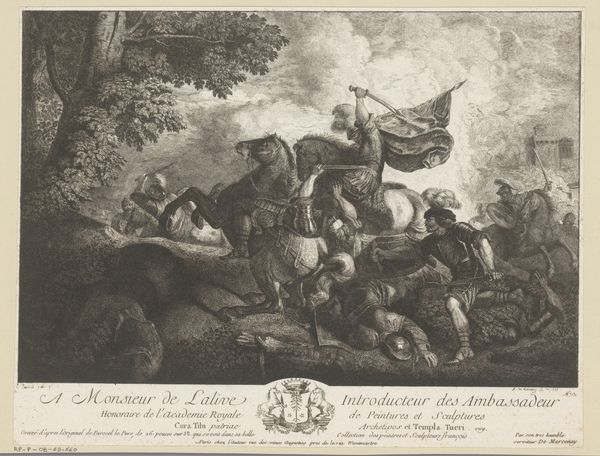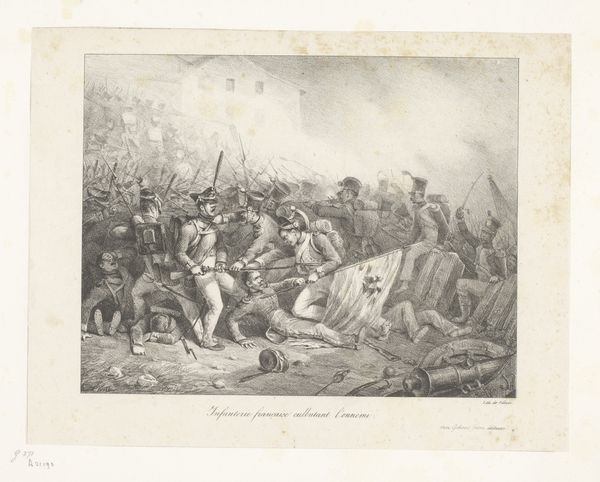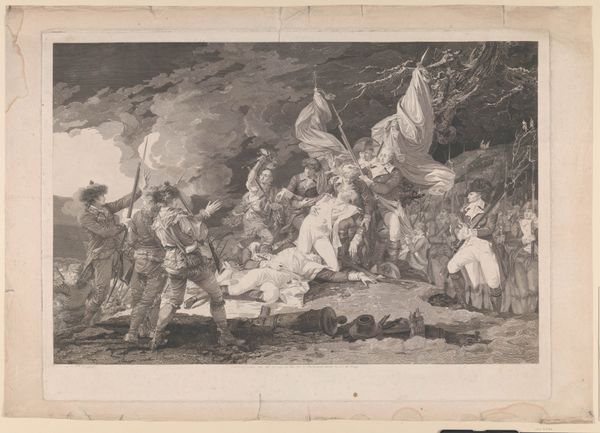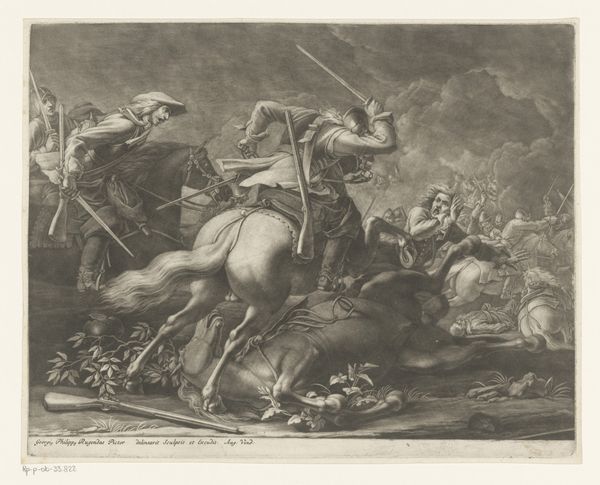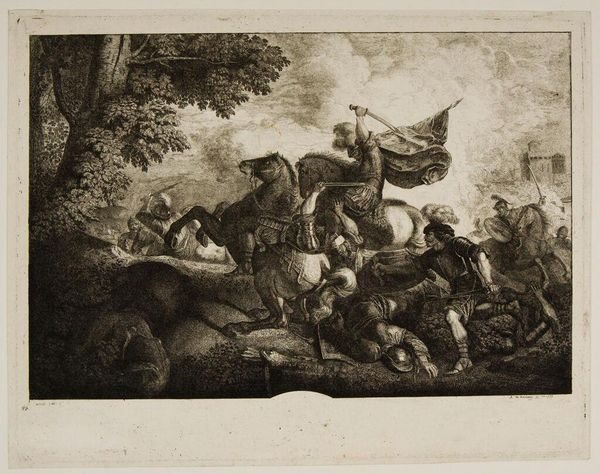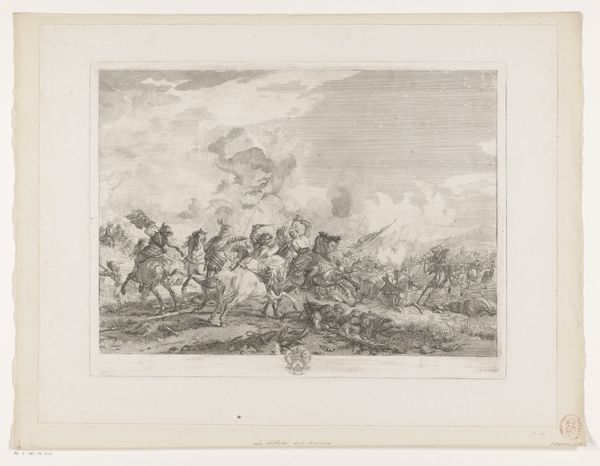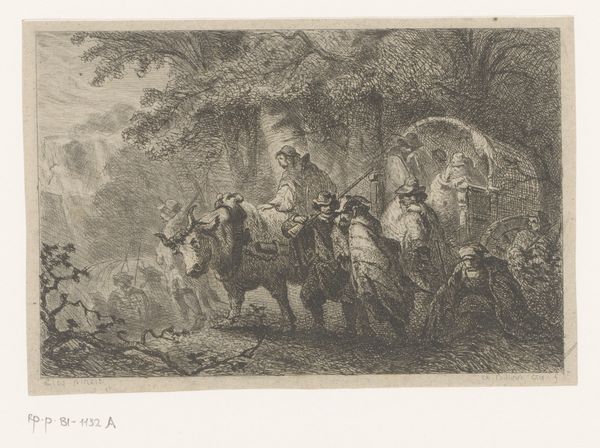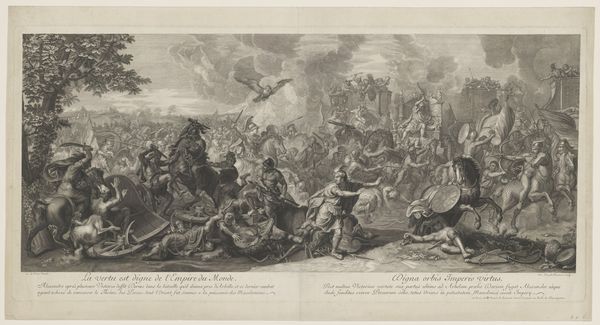
print, etching
#
pencil drawn
#
narrative-art
#
baroque
# print
#
etching
#
pencil sketch
#
figuration
#
pencil drawing
#
traditional art medium
#
line
#
history-painting
Dimensions: height 249 mm, width 332 mm
Copyright: Rijks Museum: Open Domain
Curator: We’re looking at "Strijdgewoel," an etching by Antoine de Marcenay de Ghuy, created in 1755. Editor: It’s a tumultuous scene. Chaos rendered in stark monochrome; I immediately notice how the artist directs our gaze through converging diagonal lines, amplifying the feeling of conflict and frenzy. Curator: Absolutely. The artwork depicts a scene of historical battle, and one reading could place the etching within broader narratives of conflict during the mid-18th century—a period marked by increasing tensions and wars, not just between European powers but in the colonies as well. De Ghuy may well have been alluding to contemporary anxieties. Editor: Or perhaps referencing past upheavals. Consider the composition itself. The clustered figures and swirling movement echo the Baroque aesthetic, a style characterized by its dramatic intensity and dynamic energy. See how de Ghuy employs hatching and cross-hatching techniques to create areas of deep shadow, thereby heightening the drama. Curator: Speaking of drama, there's the clear suggestion of the narratives surrounding leadership and masculinity at the time. The central figure atop the horse is wielding a flag, representing perhaps, a distorted sense of patriotic duty that contributed to this type of violence. Who benefits, really? Editor: A visual feast, it’s almost overwhelming in its density. The details—the musculature of the horses, the fallen soldiers, the fluttering flag—all contribute to a scene charged with intense energy. The artist compels us to confront the physicality of battle. Curator: But is it really a heroic scene, or an indictment? If we think about the ethics of warfare and the representation of human suffering at this moment in time...it compels questions that resonate deeply. Editor: Perhaps both? It seems de Ghuy allows us to become absorbed by the maelstrom of artistic virtuosity, and historical narrative. I admire the dynamic visual complexity of it all. Curator: I agree, and I leave considering how warfare’s persistent visibility reflects our shared historical trajectories.
Comments
No comments
Be the first to comment and join the conversation on the ultimate creative platform.
